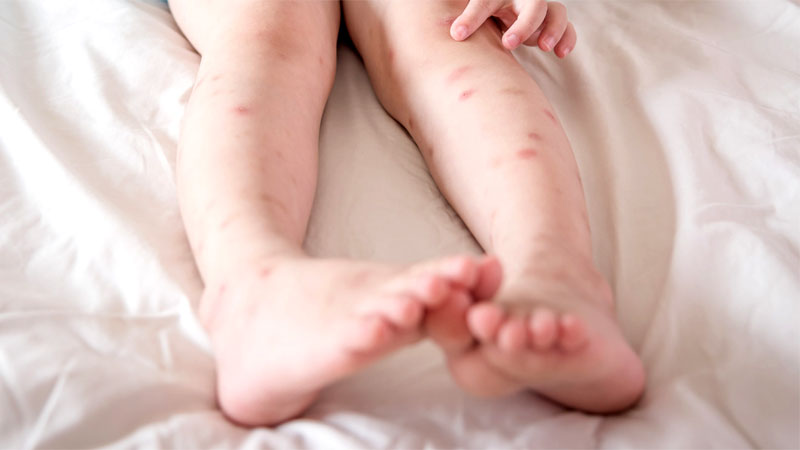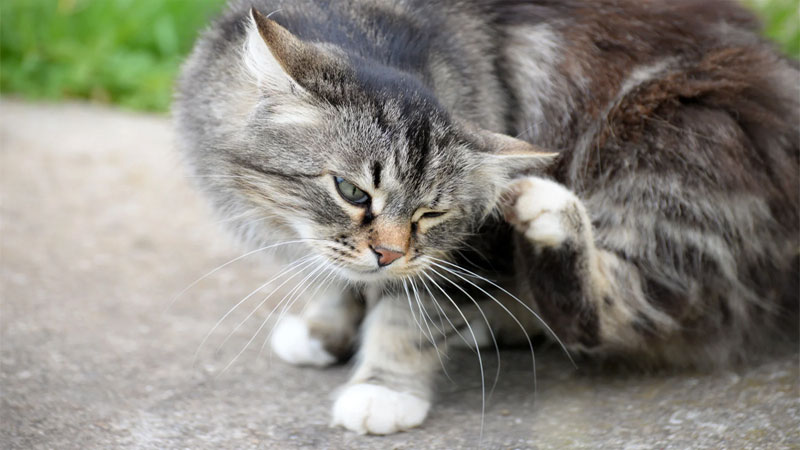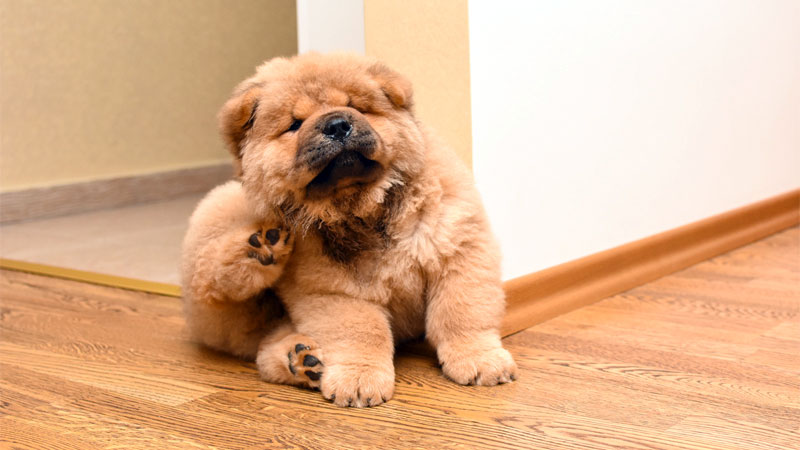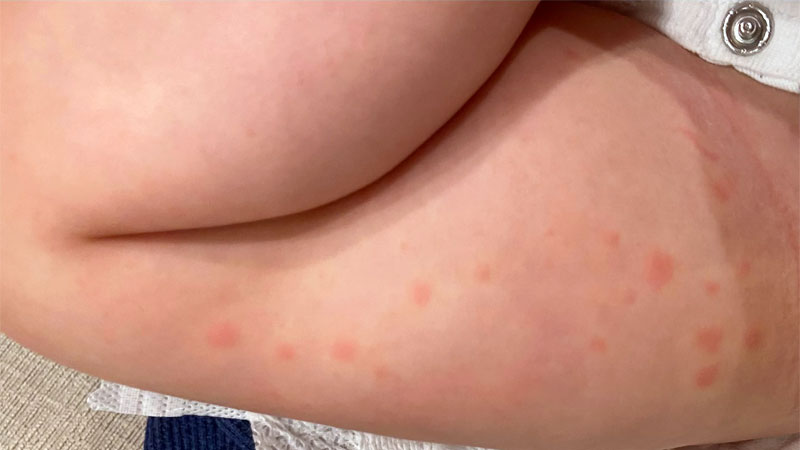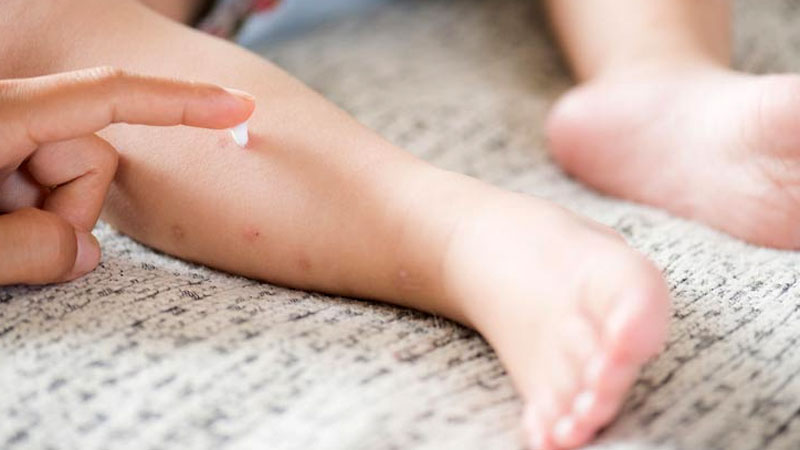Nobody wants to deal with fleas outside of the circus. Thus it’s a bad day when you find fleas in the house. What’s even worse is when you find bite marks on your kids. But aren’t fleas only supposed to attack pets?
Let’s look at this matter from various angles and give you some honest answers. There’s a lot of ground to cover, so let’s get started!
Can Fleas Bite Children?
There’s a common myth that fleas only bite pets, but anyone who’s had a flea problem knows this is far from the truth. What IS true is that the risk of bites becomes more likely in proportion to the size of the infestation (or in the event your pets aren’t home).
Different Species, Different Hosts (USUALLY)
One thing most websites fail to mention is that there are actually several types of flea. Each species has its own preference of host animal. But that’s the key, they have a preference, NOT a necessary host.
Thus any flea type can attack any mammal that other fleas target. However, there are three in particular that you may encounter at home.
Cat Fleas (Ctenocephalides felis)
This is the species everyone knows and hates. As the name suggests, they’ve followed cats from Africa to the rest of the world. Be warned that adult fleas only make up 5% of an infestation.
Dog Fleas (Ctenocephalides canis)
Dog fleas aren’t spoken of as often, but they’re almost as common as cat fleas and look nearly identical. When dogs aren’t around, they’ll go for cats, then humans.
Human Fleas (Pulex irritans)
And now for the kicker – a flea that will go after a variety of mammals including humans. Formerly known as the house flea, these critters feel right at home in both pet fur and human hair.
While not as common as some other flea species, an infestation of these guys means nobody’s safe!
Was It REALLY a Flea Bite?
But wait, what if you don’t have pets? Can it still be a flea bite? Unfortunately, the answer is yes.
Fleas can sense fresh blood (and living creatures) based on factors such as heat, carbon dioxide emissions, and scent. They might wander into your home through entry points. They can also hitch a lift from an infested area to your home.
Fleas are able to hibernate in the pupal stage for up to two years without feeding, then suddenly emerge as adults when a potential host is nearby. Or, even worse, they could have entered your home on a pet or pest (be wary of rat fleas!) before deciding to stick around.
If your cat or dog likes to nap on a bed in the house and they have fleas, there’s a good chance the bed has fleas as well.
All of that said, many critters have the ability to bite in the night (and even the day). Thus, you should examine the bite to determine what actually bit your child.
Signs Your Child Was Bitten By a Flea
Flea bites most often occur on the legs and feet, although they can also appear elsewhere if the victim was sitting or laying down. The bite will have an immediate reaction, forming a small itchy bump surrounded by a red halo.
If you scratch at it, the area can become a rash. However, if you leave it alone, the bump will vanish, leaving behind just a red circle that slowly fades away.
Another sign that it was a flea that attacked is the presence of flea dirt in places your pet likes to hang out. However, if you don’t have pets, it may be harder to locate flea dirt to confirm the attacker’s identity.
When Fleas Bite
So let’s say you’ve made some sort of confirmation that fleas are present, either by identifying the bite, spotting flea dirt, or actually seeing a flea. Now what?
Are the bites dangerous to children, and if so, what can you do to reduce that danger?
The Risks
Let’s face it, the smaller you are, the more dangerous something can become. Thus, while adult humans only suffer from discomfort and a possible risk of disease, a kitten can literally be killed by fleas. So where does that leave your kids?
Flea Bites on Infants
As a general rule, flea bites aren’t dangerous to babies. However, there are a number of signs to watch out for that could indicate the bite is serious.
For example, fleas can transmit many diseases which can be trouble for adults but deadly to infants because their immune system is still developing. Babies also exhibit more symptoms than older children, including:
- Allergic reactions (blisters, rash, hives, or shortness of breath)
- Bumps or redness in clusters instead of isolated
- Fever
- Inconsolable crying
- Itching
- Parasites from swallowing an infested flea
If your infant is exhibiting any of the more severe symptoms, consult with your pediatrician immediately. In very rare cases where the flea infestation is completely out of control, an infant may be bitten enough to cause anemia.
Thankfully, they won’t share the same level of danger as a smaller host such as a kitten or puppy.
Flea Bites on Toddlers and Older children
Once a child becomes a toddler, they have a fully active immune system and are far less likely to have complications. However, there are still a few concerns, such as possible allergic reactions.
Also, since you no longer trim the child’s nails as much (or they’re old enough to avoid trimming their own nails), scratching the bite area could lead to a rash or broken skin, and there’s a risk the site could become infected.
Are Flea Bites on Children Considered Neglect or Abuse?
In an age where your child can be taken away for the most ridiculous of things, this question seems more relevant than ever. And the answer? It depends on the extent of the bites.
One or two flea bites on a child, especially in a home where there are pets, is not considered neglect to sane people. It happens.
Agencies generally consider flea bites child neglect if the child is covered in bites and those bites continue to appear. This is seen as a sign that the parents aren’t making an effort to address the problem. The bites themselves may not be dangerous, but a home with an ongoing infestation of any sort is considered an unhealthy environment.
The best thing you can do is to address flea infestations quickly so they don’t reach levels where your children are covered in bites.
Not only will this keep your kids happier (and under your care), but it greatly reduces the risk of encountering that one flea who happens to be carrying the plague or some other disease.
Treating Flea Bites
Okay, so now that we’ve identified the bites and the risks involved, it’s time to work on treating those bites. Thankfully, there are a lot of things you can do that will lessen the discomfort while you’re working on getting rid of the fleas.
Treating Flea Bites on Babies
Infants have very sensitive skin and a weak immune system, so you have to be a little discerning with what you use to treat the bites. Remember, a baby explores largely with their mouth. You don’t want to use anything that might poison them.
The first step is to gently wash the bite area. Use a baby-safe soap, warm water, and a soft cloth. Don’t scrub the wound, and pat dry after cleaning it. Once cleaned, you can address the itching. The best choices at this age range are:
- Aloe gel
- Baby lotion
- Cold damp cloth or compress to reduce the swelling (be careful not to make it TOO cold)
Your pediatrician may prescribe an anti-itch medication such as hydrocortisone cream. Avoid using such products unless instructed to do so and follow all instructions carefully.
The medication in these products may have adverse effects on babies, and the fact that you’re using it on an open wound (even though the puncture is too small to see) can be dangerous.
Finish up by dressing the baby in something that will prevent them from touching or tasting any ointments. A sleeper with hand covers is perfect if the bites are on the hands, legs, or feet, but even a onesie can be useful if the bites will be covered.
Treating Flea Bites on Toddlers and Children
Thankfully, as kids get older, they stop trying to eat everything and learn how to be more responsible. Wash the wound, after which you have a wider range of products you can apply.
Cortisone creams and calamine lotion are both options once the child is a little older (check with your pediatrician if you’re not sure that your child’s old enough). You may wish to put a bandage over the bite for younger kids to help discourage scratching.
A Final Note
Nobody wants to see their kids getting bitten, but it does happen. Be sure to identify and treat the bites, then address the cause. And always remember to contact your pediatrician immediately if your child is showing any unusual or severe symptoms.
- How to Get Rid of Hawks - March 8, 2024
- How to Get Rid of Pill Bugs (Rolly Pollies) - March 1, 2024
- How to Get Rid of Groundhogs (Woodchucks) - February 5, 2024

